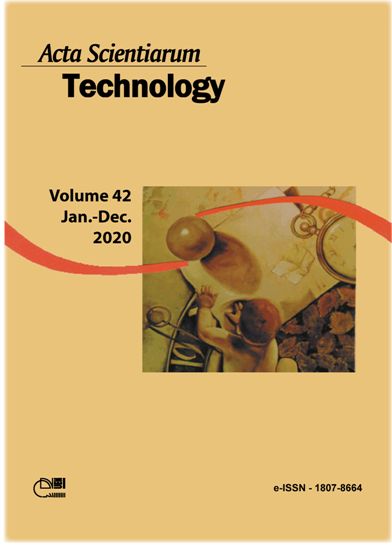A simulated case study of a library in Brazil to improve energy efficiency
DOI:
https://doi.org/10.4025/actascitechnol.v42i1.47262Palavras-chave:
building simulation; energy-saving; mini-split air-conditioner; vrf; solar control films; feasibility analysis.Resumo
The aim of this study is to quantify the energy savings of a library in the city of Foz do Iguaçu/Brazil, through simulations in EnergyPlus. Due to the great participation of air conditioning in the electric consumption of the building under study, the following proposals were studied: the exchange of the current split air conditioning units by a Variable Refrigerant Flow (VRF) system; the application of solar control films on the glasses; and both options together. The methodology followed these steps: firstly, it was simulated the current electricity consumption and the results were validated with real measures; secondly, the retrofitting measures were sized and implemented in the program and the energy savings were quantified; finally, an economic analysis was performed in order to determine the feasibility of the proposals. As a result, the VRF system showed an annual saving in air-conditioning of 42.08% related to the mini-split system. The annual electricity savings were 32.01, 2.14 and 32.80% for the VRF, solar control films, and both options together, respectively. The feasibility analysis of the VRF, considering financing and for a scenario consistent with the historical average growth of the electricity prices and inflation rate, showed that the use of a VRF instead of the splits units recovers the initial investment in 14 years. The application of solar control films proved to be economically unfeasible.
Downloads
Downloads
Publicado
Como Citar
Edição
Seção
Licença
DECLARAÇíO DE ORIGINALIDADE E DIREITOS AUTORAIS
Declaro que o presente artigo é original, não tendo sido submetido í publicação em qualquer outro periódico nacional ou internacional, quer seja em parte ou em sua totalidade.
Os direitos autorais pertencem exclusivamente aos autores. Os direitos de licenciamento utilizados pelo periódico é a licença Creative Commons Attribution 4.0 (CC BY 4.0): são permitidos o compartilhamento (cópia e distribuição do material em qualqer meio ou formato) e adaptação (remix, transformação e criação de material a partir do conteúdo assim licenciado para quaisquer fins, inclusive comerciais.
Recomenda-se a leitura desse link para maiores informações sobre o tema: fornecimento de créditos e referências de forma correta, entre outros detalhes cruciais para uso adequado do material licenciado.



















